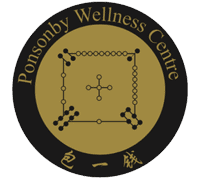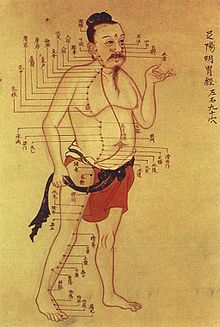Acupuncture in Medicine

Traditional Chinese medicine explains acupuncture as a technique for balancing the flow of energy or life force — known as chi or qi (chee) — believed to flow through pathways (meridians) in your body. By inserting needles into specific points along these meridians, acupuncture practitioners believe that your energy flow will re-balance.
In contrast, many Western practitioners view the acupuncture points as places to stimulate nerves, muscles and connective tissue. Some believe that this stimulation boosts your body’s natural painkillers.
Why it’s done
Acupuncture is used mainly to relieve discomfort associated with a variety of diseases and conditions, including:
- Chemotherapy-induced and postoperative nausea and vomiting
- Dental pain
- Headaches, including tension headaches and migraines
- Labour pain
- Low back pain
- Neck pain
- Osteoarthritis
- Menstrual cramps
- Respiratory disorders, such as allergic rhinitis
- Risks
The risks of acupuncture are low if you have a competent, certified acupuncture practitioner using sterile needles. Common side effects include soreness and minor bleeding or bruising where the needles were inserted. Single-use, disposable needles are now the practise standard, so the risk of infection is minimal. Not everyone is a good candidate for acupuncture. You may be at risk of complications if you:
- Have a bleeding disorder. Your chances of bleeding or bruising from the needles increase if you have a bleeding disorder or if you’re taking blood thinners.
- Have a pacemaker. Acupuncture that involves applying mild electrical pulses to the needles can interfere with a pacemaker’s operation.
- Are pregnant. Some types of acupuncture are thought to stimulate labour, which could result in premature delivery.
During the procedure
Acupuncture points are situated in all areas of the body. Sometimes the appropriate points are far removed from the area of your pain. Your acupuncture practitioner will tell you the general site of the planned treatment and whether you need to remove any clothing. A gown, towel or sheet will be provided. You lie on a padded table for the treatment, which involves:
- Needle insertion. Acupuncture needles are inserted to various depths at strategic points on your body. The needles are very thin, so insertion usually causes little discomfort. People often don’t feel them inserted at all. Between five and 20 needles are used in a typical treatment. You may feel a mild aching sensation when a needle reaches the correct depth.
- Needle manipulation. Your practitioner may gently move or twirl the needles after placement or apply heat or mild electrical pulses to the needles.
- Needle removal. In most cases, the needles remain in place for 10 to 20 minutes while you lie still and relax. There is usually no discomfort when the needles are removed.
Results
The benefits of acupuncture are sometimes difficult to measure, but many people find it helpful as a means to control a variety of painful conditions. Several studies, however, indicate that some types of simulated acupuncture appear to work just as well as real acupuncture. There’s also evidence that acupuncture works best in people who expect it to work.
Acupuncture has few side effects, so it may be worth a try if you’re having trouble controlling pain with more-conventional methods.
If you need professional treatment, please call 0212159963 or make an appointment online here

